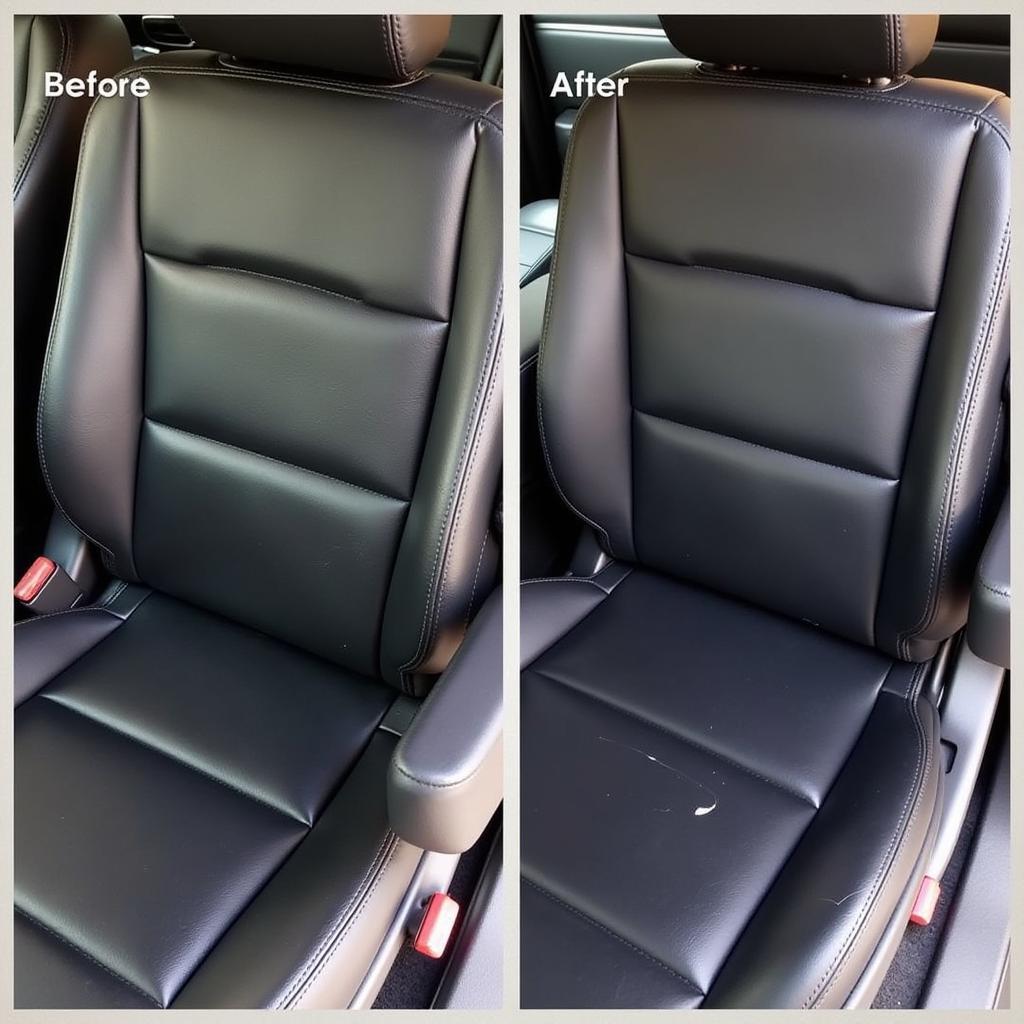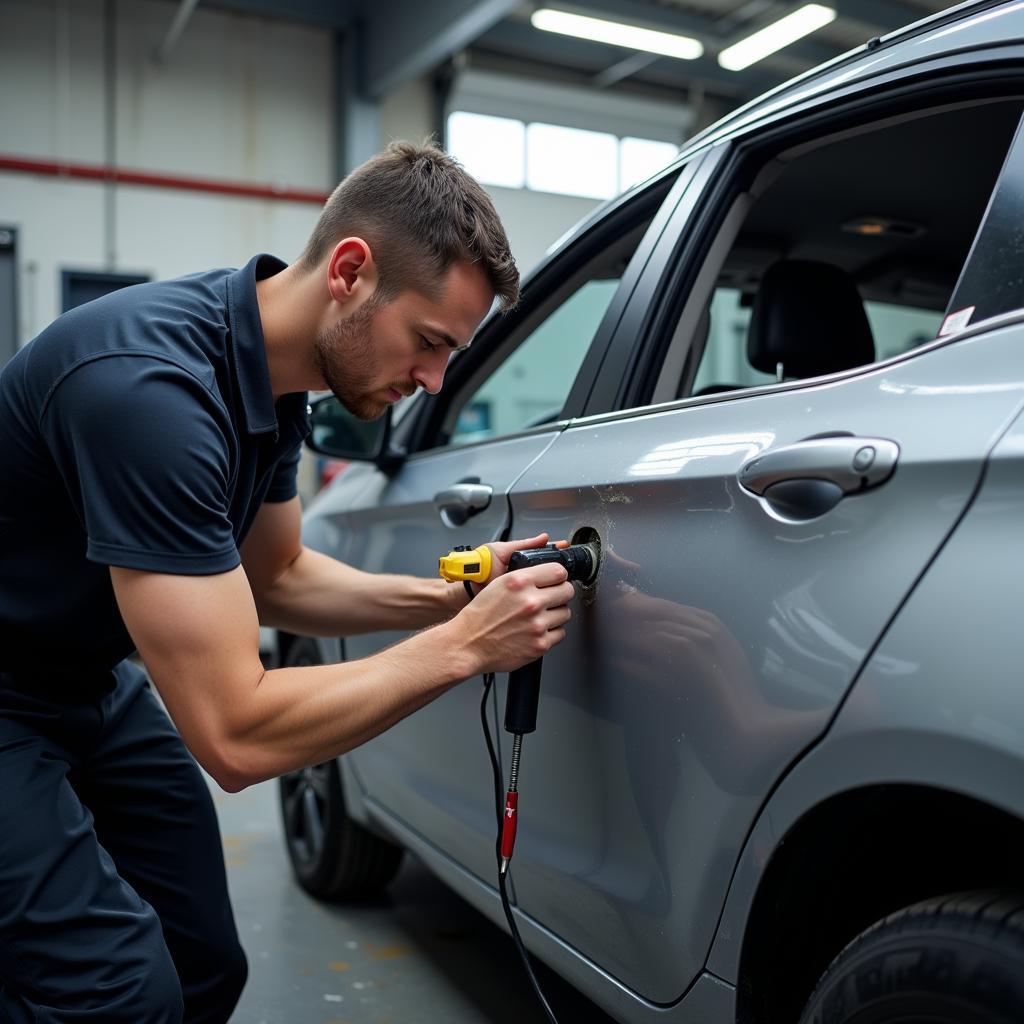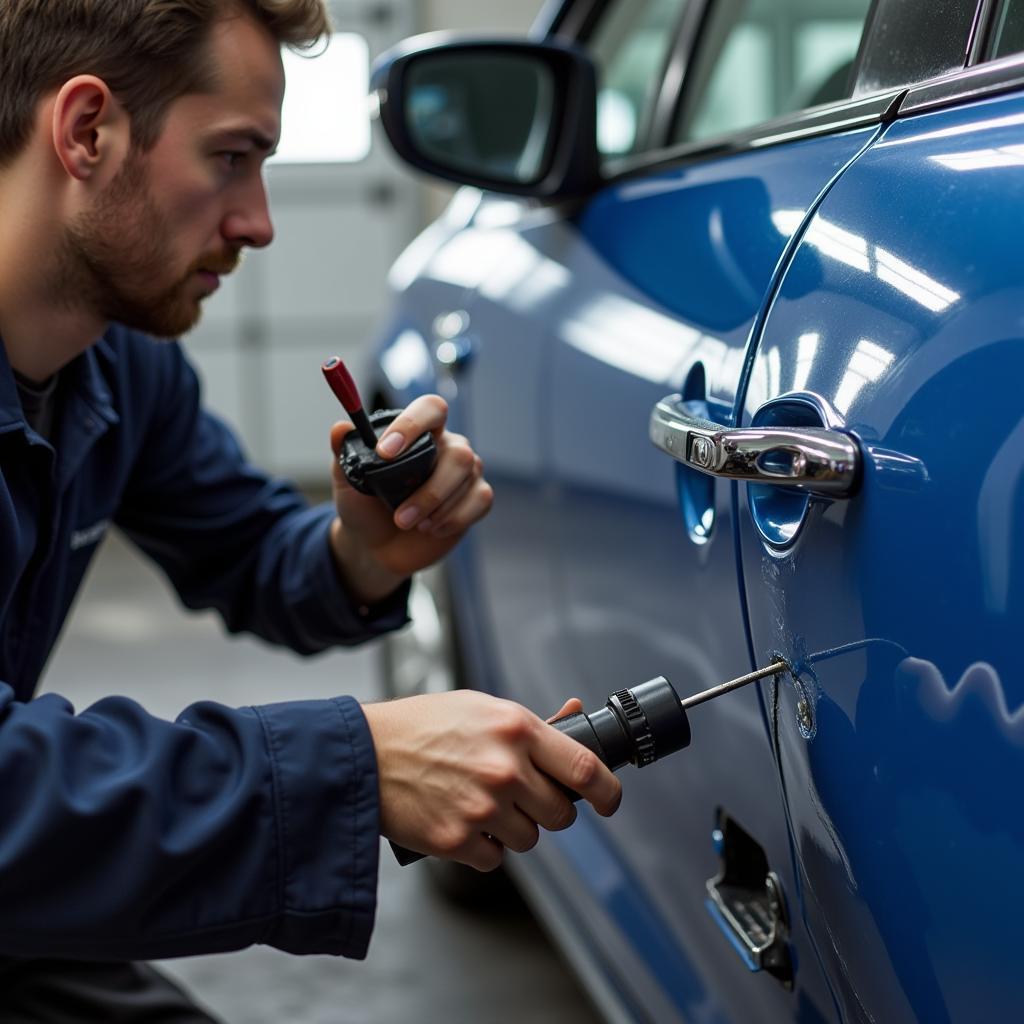Leather car seats exude luxury and comfort, but they’re not immune to wear and tear. One of the most common issues is a tear in the leather, which can be unsightly and impact the resale value of your vehicle. Fortunately, you don’t always need a costly professional repair. This guide provides a comprehensive look at how to Repair Leather Car Seat Tears, empowering you to tackle the issue head-on.
Understanding the Extent of the Damage
Before you begin, assess the severity of the tear. Is it a small nick or a large gash? Is it a clean cut or a ragged tear with frayed edges? The extent of the damage will dictate the repair method and the materials you’ll need.
Small Tears: For minor scratches and nicks, a simple leather filler product might suffice.
Medium Tears: Tears that are larger or have slightly frayed edges may require a leather repair patch in addition to filler.
Large Tears: Significant tears with extensive fraying often need professional attention. However, you can attempt a DIY repair with a heavy-duty leather repair kit.
DIY Repair: Step-by-Step Guide
Here’s a step-by-step guide to repairing a leather car seat tear yourself:
-
Clean the Area: Thoroughly clean the torn area and the surrounding leather with a leather cleaner or mild soap and water. Ensure the surface is completely dry before proceeding.
-
Trim Frayed Edges (if necessary): If the tear has frayed edges, carefully trim them with sharp scissors.
-
Apply Leather Filler: Using a palette knife or your fingers, apply leather filler to the tear, ensuring it fills the gap completely.
-
Smooth the Surface: Allow the filler to dry partially, then use a damp cloth or sponge to smooth the surface and blend it with the surrounding leather.
-
Apply Leather Repair Patch (if necessary): For larger tears, cut a leather repair patch slightly larger than the tear. Apply leather adhesive to the back of the patch and firmly press it onto the tear, ensuring there are no air bubbles.
-
Apply Leather Dye (if necessary): If the repair is noticeable, use a matching leather dye to blend the repaired area with the rest of the seat.
-
Apply Leather Conditioner: Once the repair is complete and dry, apply a leather conditioner to the entire seat to restore its softness and protect it from future damage.
When to Call a Professional
While DIY repairs can be effective for minor to moderate tears, there are instances where professional intervention is necessary. Consider these factors:
-
Extensive Damage: If the tear is exceptionally large, complex, or involves multiple layers of the seat, a professional upholsterer will have the expertise and equipment for a seamless repair.
-
Airbag Concerns: Tears near or on the side airbag panels should only be handled by professionals. Improper repairs can interfere with airbag deployment.
-
Lack of Confidence: If you’re unsure about tackling the repair yourself, it’s always best to consult a professional.
Preventing Future Tears
Prevention is key to maintaining the pristine condition of your leather car seats. Here are some preventative measures:
-
Regular Cleaning & Conditioning: Clean your leather seats regularly with a dedicated leather cleaner and conditioner. This will keep the leather supple and prevent it from drying and cracking.
-
Avoid Sharp Objects: Be mindful of sharp objects that can scratch or puncture the leather, such as keys, pens, and tools.
-
Use Seat Covers: Seat covers can provide an extra layer of protection, especially if you frequently transport pets or cargo.
-
Address Spills Immediately: Promptly clean up any spills to prevent liquids from staining or damaging the leather.
FAQs: Repairing Leather Car Seat Tears
Q: How much does it cost to professionally repair a leather car seat tear?
A: The cost can vary significantly depending on the severity of the damage, the type of leather, and the location. On average, expect to pay between $150 to $500 for professional repair.
Q: Can I use super glue to repair a leather car seat tear?
A: While tempting, it’s not recommended. Super glue is too harsh for leather and can cause further damage, making the tear more difficult to repair properly.
Q: How long does it take for leather filler to dry?
A: Drying time varies depending on the type of filler used. Typically, it takes about 15 to 30 minutes for the filler to dry to the touch, but it’s best to allow it to cure completely for 24 hours before using the seat.
Need Help With Your Leather Car Seat Repair?
Repairing a leather car seat tear doesn’t have to be a daunting task. With the right knowledge and tools, you can often restore your seats to their former glory. However, if you’re dealing with extensive damage or prefer the expertise of a professional, don’t hesitate to seek assistance. For personalized advice or to schedule a consultation, contact our team of car care specialists via WhatsApp at +1(641)206-8880 or email us at [email protected]. We’re available 24/7 to address your concerns and guide you towards the best solution. Remember, maintaining the condition of your car’s interior not only enhances its aesthetics but also contributes to its overall value and your driving pleasure.





